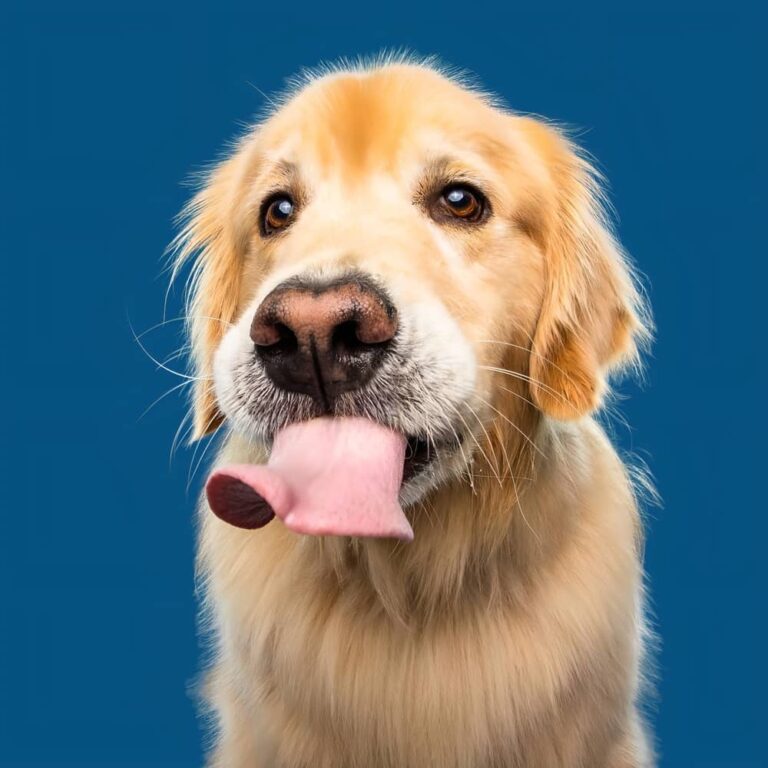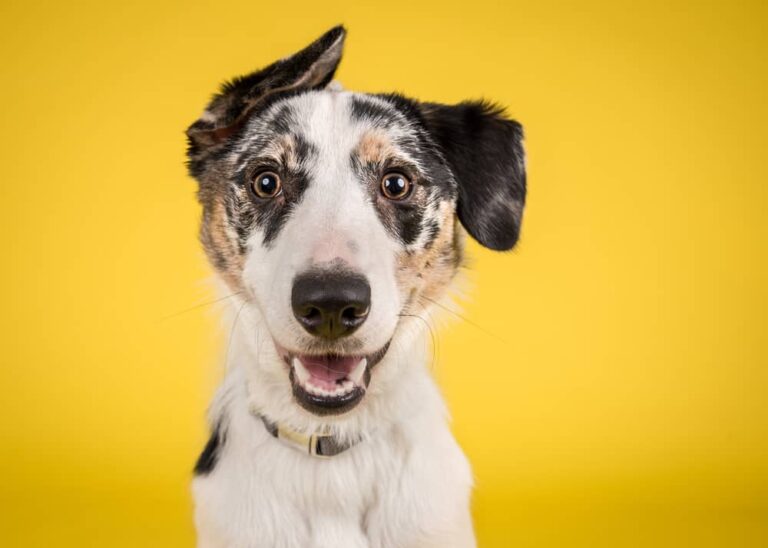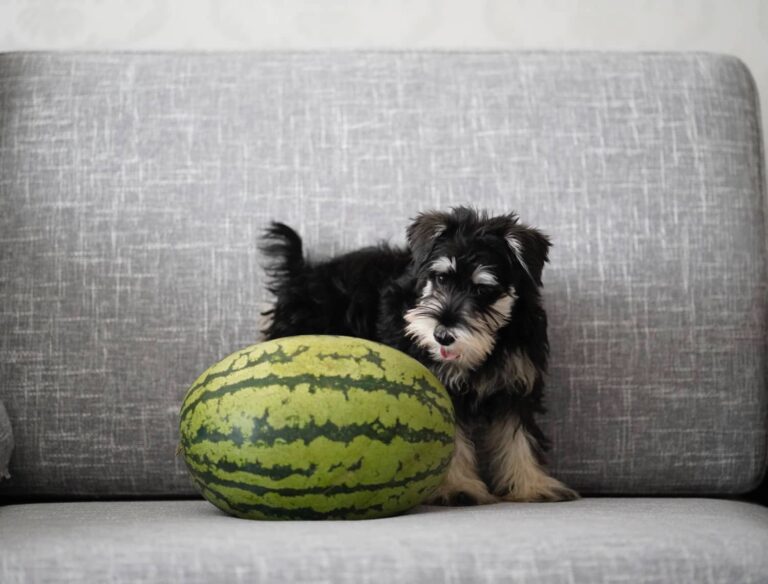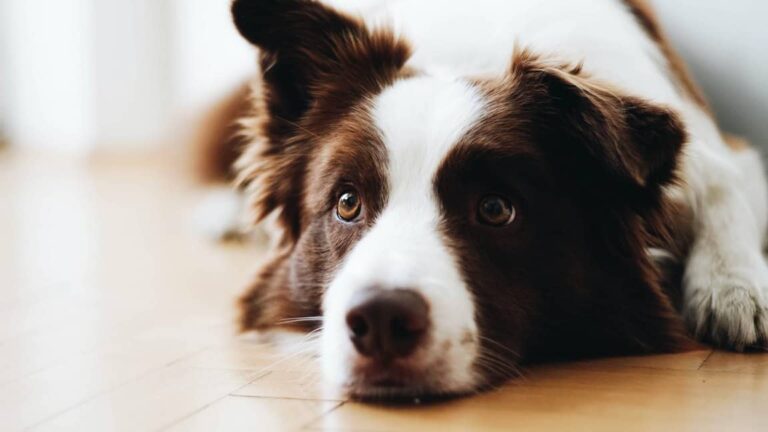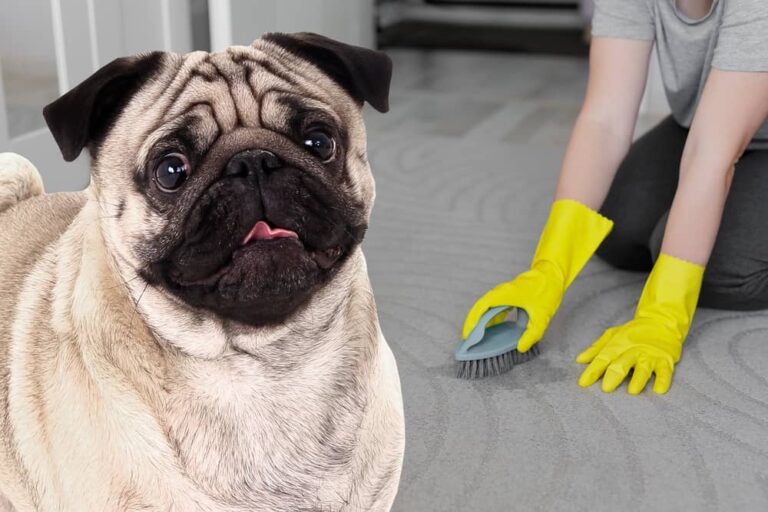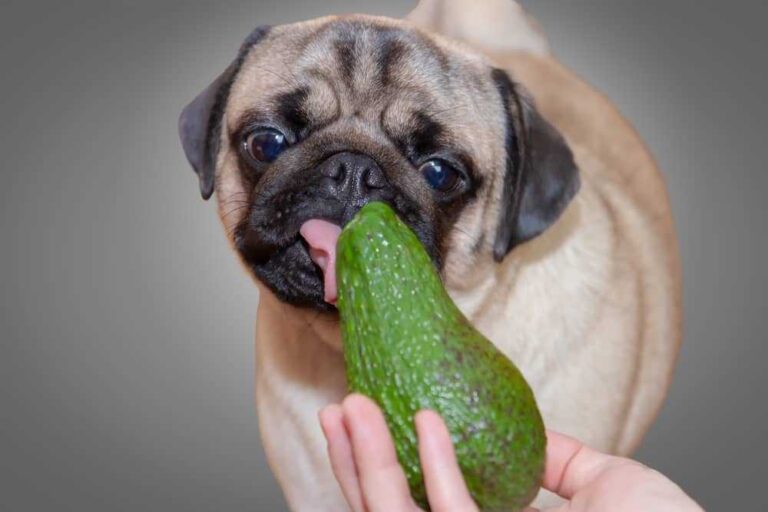Vaseline for Dog Eye Boogers: A Comprehensive Guide
Introduction
When it comes to our canine companions, noticing eye discharge, commonly referred to as “eye boogers,” can be a cause for concern among pet owners. This article specifically addresses the intriguing question: Can Vaseline be used for dog eye boogers?
Eye boogers in dogs are not an uncommon occurrence, but their presence can sometimes signal underlying health issues.
Ranging from simple environmental irritants to more serious health conditions, the causes of eye discharge in dogs are varied. This article aims to explore the potential use of Vaseline, a well-known petroleum jelly product, as a treatment for dog eye boogers.
We delve into the feasibility of this approach, guided by expert opinions and thorough research.
However, it’s important to emphasize from the outset that this article is intended strictly for educational purposes. The information provided herein should not be construed as a substitute for professional veterinary advice.
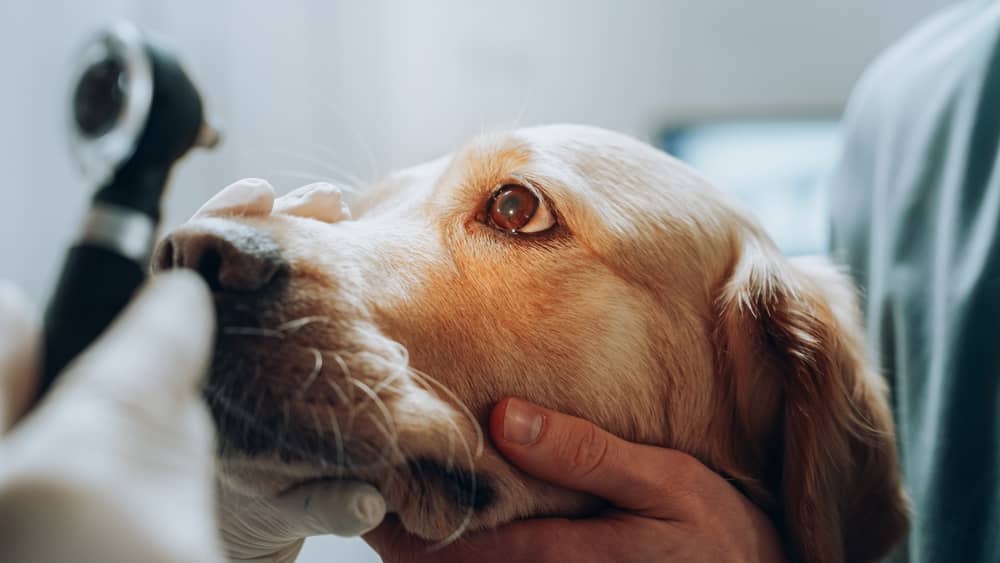
While home remedies like Vaseline are often discussed among pet owners, it’s crucial to understand their appropriate use and limitations.
If your dog is experiencing persistent or concerning eye discharge, it’s always best to consult with a veterinarian. Only a qualified professional can accurately diagnose and recommend safe, effective treatments tailored to your dog’s specific needs.
Are Seresto Collars Safe for Pregnant Dogs? -Explore the Facts
In this article, while we explore the use of “vaseline for dog eye boogers,” the overarching message is one of caution and the importance of seeking professional guidance for your pet’s health.
Understanding Dog Eye Boogers
Eye boogers in dogs, a topic familiar to many pet owners, are essentially a form of ocular discharge that can vary in appearance from crusty and dry to wet and gooey. While often benign, understanding their nature and causes is essential for ensuring the health and comfort of our canine friends.
Eye discharge, or ‘eye boogers’, can occur for several reasons. In its most harmless form, it’s simply a way for the eye to remove dust, debris, or dead cells — a natural cleaning mechanism. However, it can also be indicative of more concerning issues.
Common causes include environmental allergens, such as pollen or dust, which can irritate a dog’s eyes, leading to increased tear production and subsequent discharge.
Infections, either bacterial or viral, are also common culprits. Certain breeds are predisposed to eye problems due to their facial structure; for example, brachycephalic breeds (like Pugs and Bulldogs) often experience more eye discharge due to their protruding eyes and wrinkled skin.
An authoritative quote from Dr. Rachel Smith, a veterinary ophthalmologist, sheds light on this: “Eye discharge in dogs can range from normal tear drainage to a symptom of infection or even an indication of a deeper health issue.
It’s important to observe the amount, color, and frequency of the discharge to determine if it’s a routine cleaning process or something that needs medical attention.”
Therefore, while eye boogers can be a regular part of a dog’s physiology, they can also signal underlying health problems. Observing your dog’s eyes for any changes in the discharge, such as an increase in quantity, a change in color, or accompanying symptoms like redness, swelling, or odor, is crucial.
These could be signs of conjunctivitis, dry eye, corneal ulcers, or other serious conditions requiring veterinary attention.
In summary, dog eye boogers are a common phenomenon that can have various causes, ranging from simple environmental irritants to more serious health concerns. Understanding these causes and closely monitoring any changes in your dog’s eye discharge is key to ensuring their ocular health.
If you notice any concerning changes, it’s imperative to consult with a veterinarian to rule out or treat any possible medical conditions.
Can Dogs Eat Broccoli? – The Benefits and Risks
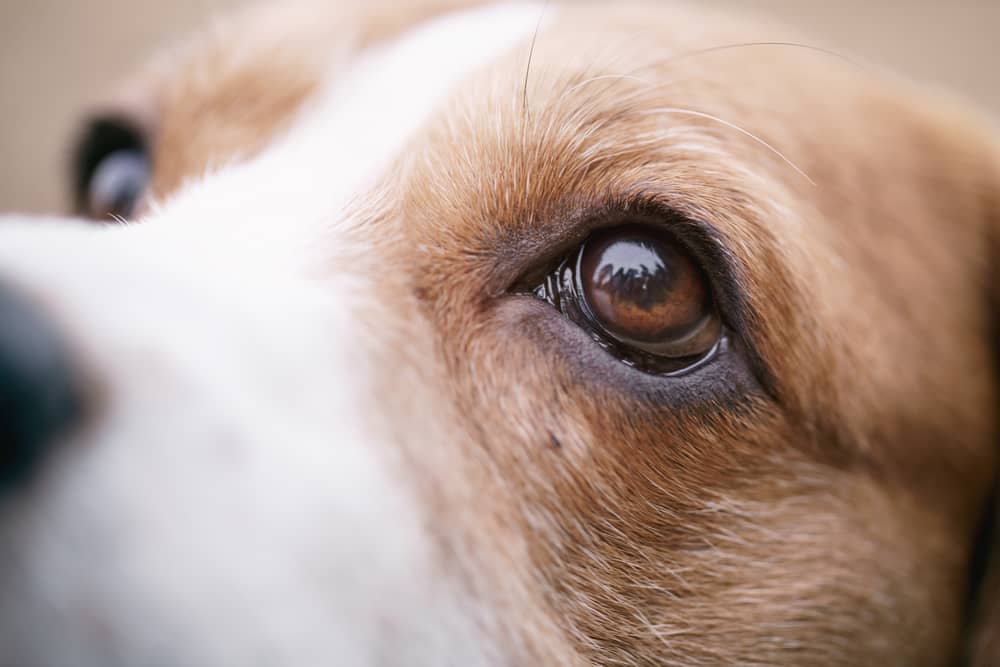
Vaseline and Its Properties
Vaseline, a brand name for petroleum jelly, is a common household product known for its versatile uses and
distinctive properties. Understanding its composition and how it can be relevant, especially in the context of pet care and specifically for issues like “vaseline for dog eye boogers,” is important for any pet owner.
- Composition and General Uses: Vaseline is made from a mixture of mineral oils and waxes, which come together to form a semi-solid jelly. Its primary component, petroleum, is a by product of the oil industry.
- Vaseline has been widely used for over a century, known for its ability to lock in moisture and create a protective barrier on the skin. In human medicine, it’s commonly used for minor cuts, burns, and as a moisturizer.
- Properties Relevant to Eye Care: In terms of eye care, Vaseline’s moisturizing effects and its ability to form a protective barrier can be beneficial.
- For instance, if applied correctly, it can help to keep the area around the eyes moisturized, which might be useful in certain conditions where the skin becomes dry or flaky. However, its use directly in or very close to the eyes is generally not recommended due to the risk of irritation and potential harm.
- Educational Focus: Safety and General Use in Pet Care: When it comes to using Vaseline in pet care, especially for something like dog eye boogers, caution is paramount. While its moisturizing and protective properties might seem beneficial, the risk of the product getting into the dog’s eyes is significant.
- Petroleum jelly can cause irritation if it enters the eye, and in some cases, it might lead to an infection if it traps bacteria against the skin or in the eye.
It’s also important to consider that dogs, unlike humans, might try to lick off any substance applied to or near their face, ingesting the product. While Vaseline is non-toxic, ingestion in large amounts could potentially cause upset stomach or diarrhea.
Therefore, while Vaseline has various uses in human care, its application in pet care, especially near sensitive areas like the eyes, should be approached with caution. It is always advisable to consult with a veterinarian before using products like Vaseline for treating conditions like dog eye boogers.
A veterinarian can provide guidance on safe and appropriate treatment options tailored to the specific needs of your pet. Remember, what is safe for humans is not always safe for our pets.
Pros and Cons of Using Vaseline for Dog Eye Boogers
The idea of using Vaseline for dog eye boogers brings with it a set of potential benefits and risks. It’s important for pet owners to weigh these carefully before considering its application.
Benefits:
- Moisturizing Effects: Vaseline is known for its ability to lock in moisture, which can be beneficial in treating areas around the eyes that might be dry or irritated. However, it’s crucial to ensure that it doesn’t come into direct contact with the eye itself.
- Ease of Application: The texture of Vaseline makes it easy to apply. It smoothly glides over the skin, which can be less distressing for the dog compared to more invasive treatments.
- Availability: One of the main advantages of Vaseline is its wide availability. It’s a common household item and can be found in most stores, making it an accessible option for many pet owners.
Risks and Cautions:
- Potential for Eye Irritation: The biggest risk of using Vaseline near a dog’s eyes is the potential for the product to get into the eye, causing irritation or even an infection.
- Contamination Risk: There’s also a risk of contamination. Vaseline can trap dirt and bacteria against the skin, which could lead to infections, especially in an area as sensitive as around the eyes.
- Ingestion Risk: Dogs might try to lick off substances applied to their face, leading to ingestion of Vaseline. While it’s generally non-toxic, ingestion in larger amounts can cause gastrointestinal upset.
Authoritative Quote: Dr. Rebecca Green, a veterinarian specializing in canine ophthalmology, offers an expert perspective: “While Vaseline can be a helpful moisturizer for skin issues, its use near the eyes should be approached with caution.
The risk of irritation and potential infection, especially if the product gets into the eye, is significant. There are safer and more effective veterinary-approved products for treating eye-related issues in dogs.”

In summary, while Vaseline has its benefits, such as moisturizing effects and ease of application, the risks associated with its use near a dog’s eyes, particularly the possibility of irritation and infection, cannot be overlooked.
It is imperative to consult with a veterinarian to explore safer and more appropriate options for treating eye boogers in dogs. An expert’s guidance ensures that your pet receives the most suitable care without unintended complications.
Can You Put a Flea Collar on a Nursing Dog? Unveiling the Truth
Safe Application of Vaseline
While the use of Vaseline near a dog’s eyes is generally not recommended due to potential risks, there may be situations where a veterinarian advises its application for specific skin issues around the eye area.
If Vaseline is to be used, it’s crucial to apply it safely to minimize any risk of discomfort or harm to your dog. Here’s a step-by- step guide along with important tips to ensure safe application:
Step-by-Step Guide:
- Clean Hands: Start by washing your hands thoroughly to avoid introducing bacteria or contaminants.
- Small Amount: Use a very small amount of Vaseline. You only need enough to lightly cover the area without excess product that could spread to the eye.
- Gentle Application: Gently apply Vaseline to the area around the eyes using a finger or a cotton swab. Be extremely careful not to get any Vaseline in the eye itself. It’s best to apply it to areas a bit farther from the eye where there’s no risk of it getting into the eye with blinking or tearing.
- Avoid Eye Contact: If you are applying Vaseline to a spot near the eye, ensure it’s far enough away so that your dog’s natural blinking won’t transfer the Vaseline into the eye.
- Monitor Your Dog: Keep an eye on your dog to make sure they don’t rub the area and inadvertently spread the Vaseline into their eyes or lick it off.
Tips to Avoid Discomfort or Harm:
- Use Sparingly: Excessive Vaseline can be messy and increase the risk of it getting into the eye or being ingested.
- Distraction: After application, distract your dog with a toy or treat to prevent them from rubbing the area.
- Consult Your Vet: Always talk to your veterinarian before applying any product, including Vaseline, near your dog’s eyes.
Educational Focus: It’s important to emphasize the need for caution and proper technique when applying any product near a dog’s eyes. The eyes are incredibly sensitive, and the risk of irritation or infection is high with improper application.
What to do if Dog Eats Peach Pit?
Dr. Karen Jones, a veterinarian, advises, “When treating areas near the eyes, even with seemingly harmless products like Vaseline, precision and caution are paramount. If there’s any uncertainty or if the issue persists, it’s always best to seek veterinary advice.”
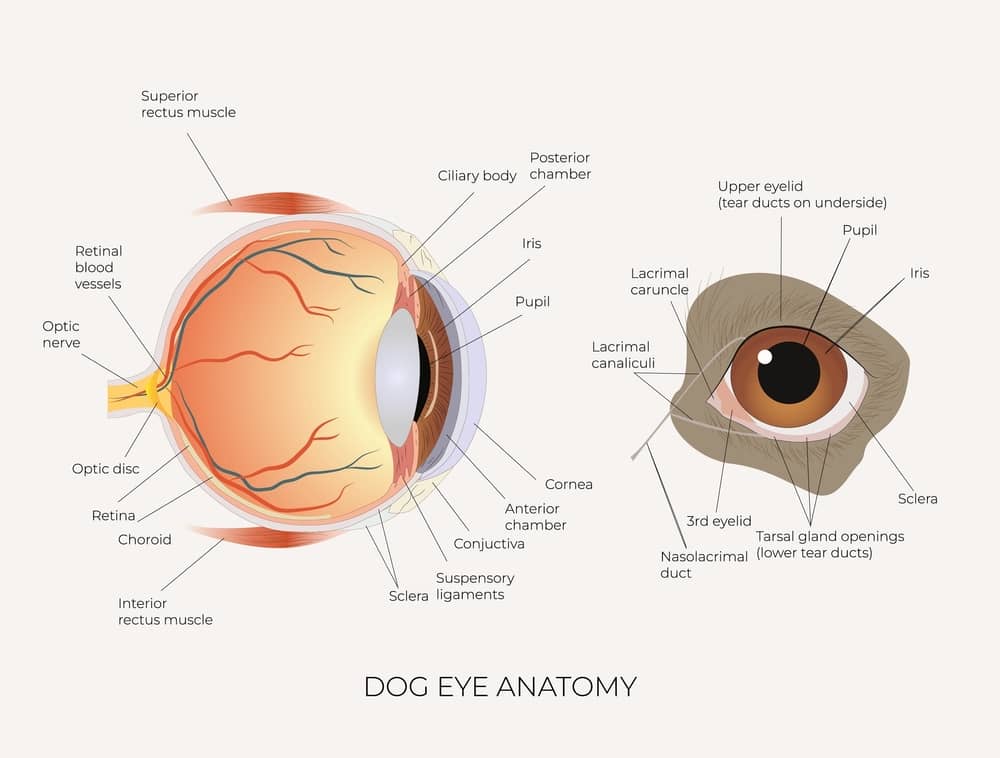
In summary, if you find yourself in a situation where Vaseline is recommended for use around your dog’s eye area, careful application is key. Always prioritize your pet’s safety, and when in doubt, consult with your veterinarian for advice and alternative treatment options.
Remember, the primary goal is to address your pet’s health concerns without causing additional issues.
Alternative Solutions and Preventive Measures
When dealing with dog eye boogers, it’s essential to consider alternative solutions and preventive measures that are safe and effective. These methods not only address the current issue but also help in preventing future occurrences.
Other Safe and Effective Methods:
- Regular Cleaning: Gently wipe the area around your dog’s eyes with a soft, damp cloth or a dog-specific eye wipe to remove any discharge. This should be done daily to prevent build-up.
- Saline Solution: A saline solution, which can be either purchased or made at home (by dissolving a teaspoon of salt in a pint of boiled, cooled water), can be used to gently clean the area around the eyes.
- Veterinary Eye Drops: If the eye discharge is due to an allergy or minor irritation, your vet might recommend specific eye drops or ointments designed for dogs.
- Proper Grooming: For breeds with long hair around the eyes, regular grooming is crucial. Keeping the hair trimmed can prevent irritation caused by hairs poking the eye.
Preventive Care:
- Diet: A well-balanced diet rich in vitamins and minerals can boost your dog’s overall health and immune system, potentially reducing the occurrence of eye issues.
- Regular Check-ups: Regular veterinary check-ups can help in early detection and treatment of conditions that might cause eye discharge.
- Environmental Adjustments: Minimize exposure to potential irritants like smoke, dust, and strong chemicals. Ensure your dog’s living area is clean and well-ventilated.
Authoritative Quote: Dr. Angela Hughes, a veterinary geneticist, suggests, “Prevention is often the best cure for eye-related issues in dogs. Regular cleaning, proper nutrition, and avoiding environmental irritants play a significant role in maintaining ocular health. For persistent problems, always consult a veterinarian before trying new treatments.”
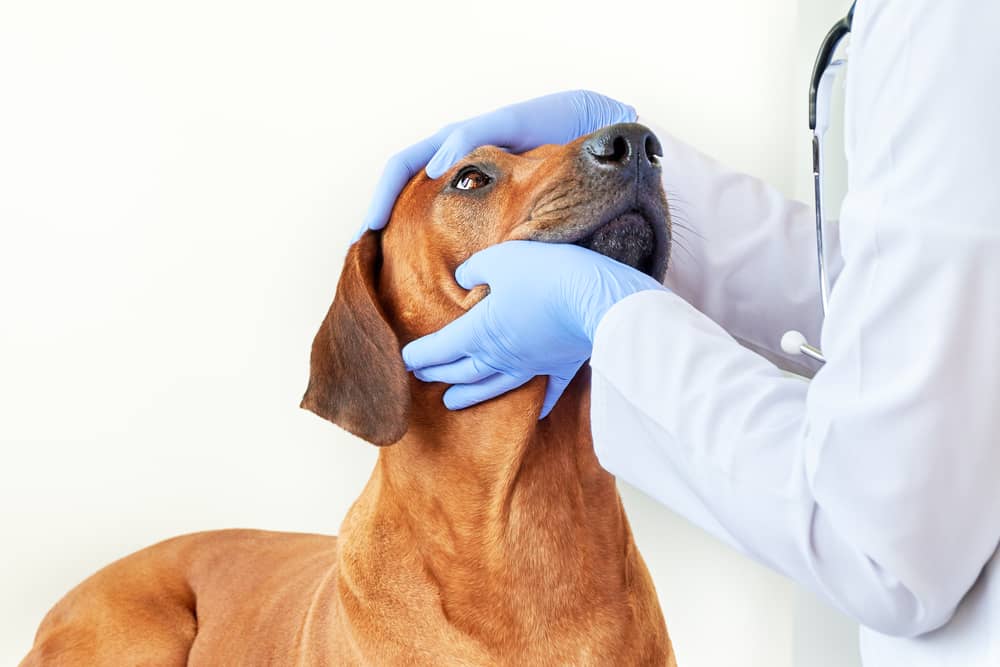
In summary, managing and preventing eye boogers in dogs involves a combination of regular cleaning, appropriate grooming, dietary considerations, and environmental adjustments. Each dog is different, and what works for one may not work for another. It’s always recommended to consult with your veterinarian for
personalized advice and treatment options, especially if you notice changes in your dog’s eye health. By taking these proactive steps, you can help ensure the health and comfort of your dog’s eyes.
When to See a Vet
Recognizing when to seek professional medical attention is crucial in managing your dog’s health, especially regarding eye-related issues like persistent eye boogers. While some minor eye discharge can be normal, certain signs indicate a need for a veterinary consultation.
Understanding these signs and the potential underlying health issues they might signify is essential for every pet owner.
Why Won’t My Dog Pee Outside? Understanding and Addressing Canine Bathroom Behavior
Signs Indicating a Need for Professional Medical Attention:
- Change in Color or Consistency: If the discharge becomes green or yellow, thick, or pus-like, it’s a sign of possible infection.
- Redness or Swelling: Redness or swelling around the eye or eyelid could indicate inflammation or infection.
- Excessive Tearing: An unusual increase in tearing can be a symptom of blocked tear ducts or irritation.
- Squinting or Pawing at the Eye: These behaviors suggest discomfort or pain, possibly from a foreign object in the eye or an injury.
- Behavioral Changes: Changes in your dog’s behavior, such as increased irritability or lethargy, can also be indicative of discomfort or pain related to eye issues.
Potential Underlying Health Issues: Persistent eye boogers can be a symptom of several underlying health issues, including:
- Conjunctivitis: Inflammation of the eye’s conjunctiva, often accompanied by discharge.
- Corneal Ulcers: Painful open sores on the cornea that can lead to discharge and require immediate attention.
- Allergies: Allergic reactions can cause increased tearing and discharge.
- Dry Eye: A condition where the eyes do not produce enough tears, leading to irritation and discharge.
- Breed-specific Issues: Some breeds are prone to certain eye conditions due to their anatomy or genetics.
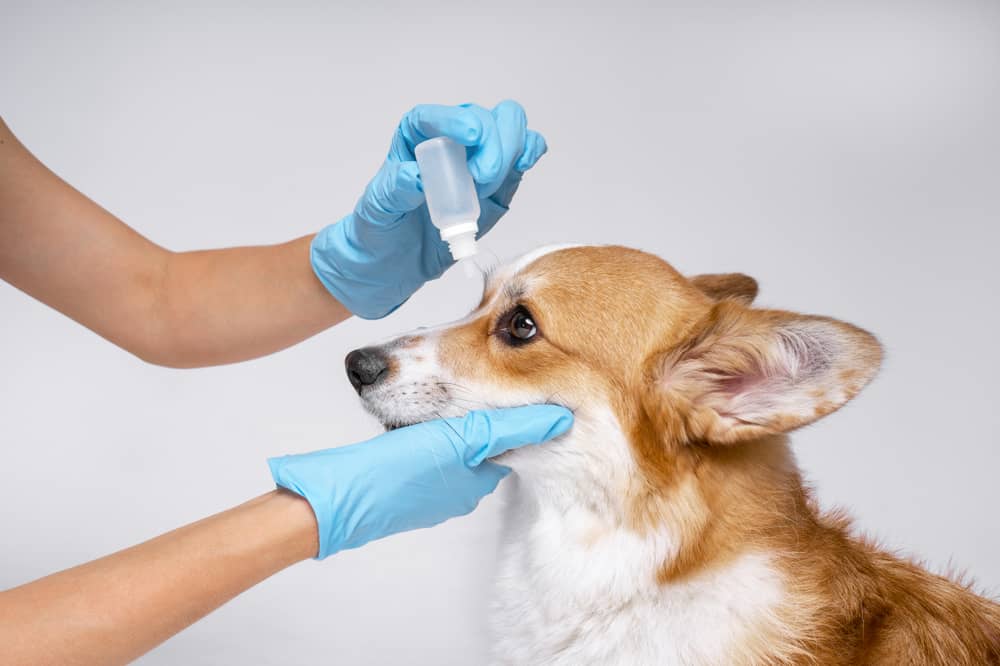
Educational Focus: It’s important to stress the significance of veterinary consultation for any eye-related symptoms.
Dr. Emily White, a veterinarian, emphasizes, “Eye symptoms in dogs should never be overlooked. Early diagnosis and treatment are crucial for preventing more serious complications. Even seemingly minor symptoms like persistent eye boogers can be indicative of underlying health issues that require professional attention.”
In conclusion, while some eye discharge is normal, certain symptoms warrant a visit to the vet. Owners should monitor their dogs for any signs of abnormal eye discharge or discomfort.
Early veterinary intervention can be key to effectively treating eye conditions and maintaining your dog’s overall ocular health. Always err on the side of caution and seek professional advice when it comes to your pet’s eyes.
Real-life Cases and Testimonials
Exploring real-life cases and testimonials can provide valuable insights into the effectiveness and safety of using remedies like Vaseline for dog eye boogers.
These anonymized stories from pet owners highlight their experiences and the lessons learned in the process.
Case 1: Using Vaseline for Mild Eye Irritation
- Background: A pet owner, Sarah, noticed her senior dog, Max, developing dry skin around his eyes, leading to mild irritation.
- Remedy Used: Sarah decided to use a small amount of Vaseline on the dry areas around Max’s eyes, being careful not to get it too close to the eyes themselves.
- Outcome: The Vaseline provided some relief for the dry skin, but Sarah noticed that Max would occasionally paw at his face, potentially risking getting Vaseline into his eyes.
- Lesson Learned: Sarah realized the importance of using such remedies with caution and decided to consult her vet for a safer alternative. The vet prescribed a dog-specific ointment that was both safe and effective.
Case 2: Home Remedy for Eye Boogers
- Background: Another dog owner, John, noticed his dog, Bella, frequently developing eye boogers. Wanting to avoid frequent vet visits, he searched for home remedies.
- Remedy Used: John tried using a saline solution to gently clean Bella’s eyes and the surrounding area.
- Outcome: The saline solution effectively cleaned the eye boogers and Bella seemed comfortable during the application. There was a noticeable reduction in the build-up of discharge.
- Lesson Learned: John learned that while some home remedies can be effective and safe, it’s crucial to monitor the pet’s response and seek professional advice if the condition persists or worsens.
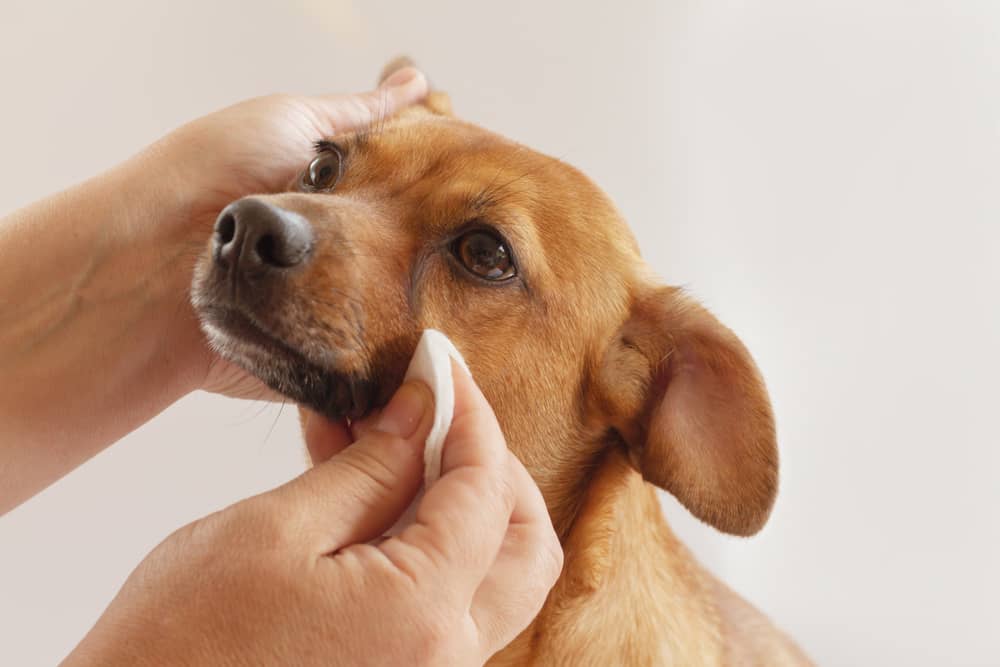
Testimonial on Professional Advice
- Experience: A dog owner, Emma, initially tried home remedies, including Vaseline, for her dog’s eye issue. However, when the condition didn’t improve, she sought veterinary help.
- Veterinary Intervention: The vet diagnosed an underlying allergy causing the eye discharge and prescribed appropriate medication.
- Reflection: Emma shares, “I realized the importance of getting professional advice. While home remedies can be helpful in some cases, they’re not substitutes for a vet’s expertise, especially for something as delicate as eye care.”
These cases emphasize that while home remedies like Vaseline can offer temporary solutions, they are not without risks. They highlight the importance of using such remedies judiciously and underscore the value of professional veterinary advice, especially when it comes to the delicate area of eye care in dogs.
Pet owners should always prioritize the safety and health of their pets, seeking expert guidance to ensure the most appropriate and effective treatment.
Additional Resources
For pet owners seeking further information on dog eye care and general health, a wealth of resources is available online. These resources offer detailed and reliable information that can help you better understand and care for your dog’s eyes, as well as their overall well-being.
Here’s a curated list of recommended readings, websites, and videos:
Recommended Readings:
- “The Dog Owner’s Home Veterinary Handbook” by Debra M. Eldredge, DVM: This comprehensive guide covers various aspects of canine health, including eye care.
- “The Eye in Veterinary Practice” by Dr. Peter G. C. Bedford: Although more technical, this book provides in-depth information on canine ophthalmology.
- “Caring for Your Dog: The Complete Canine Home Reference” by Dr. Bruce Fogle: A great resource for general dog care, including sections on eye health.
Websites:
Videos:
- American Kennel Club (AKC) – www.akc.org: The AKC website offers a host of articles on dog health, including eye care tips and common eye problems in dogs.
- VeterinaryPartner – www.veterinarypartner.vin.com: A reliable source for vet-authored articles on a wide range of canine health topics, including eye issues.
- PetMD – www.petmd.com: Provides detailed articles on pet health, care, and nutrition, with a section dedicated to eye health in dogs.
- “Dog Eye Problems – 5 Natural Remedies” – Rodney Habib: Offers natural solutions for minor eye problems in dogs.
- “How to Clean Your Dog’s Eyes” – American Animal Hospital Association: A practical guide to safely cleaning your dog’s eyes.
- “Dog Eye Infections: What to Do?” – MercolaHealthyPets: Dr. Karen Becker discusses how to identify and address eye infections in dogs.
These resources can be extremely useful for learning more about canine eye care and general health. However, they should not replace professional veterinary advice, especially when dealing with specific health concerns.
Always consult your vet for any health issues your dog may be experiencing.
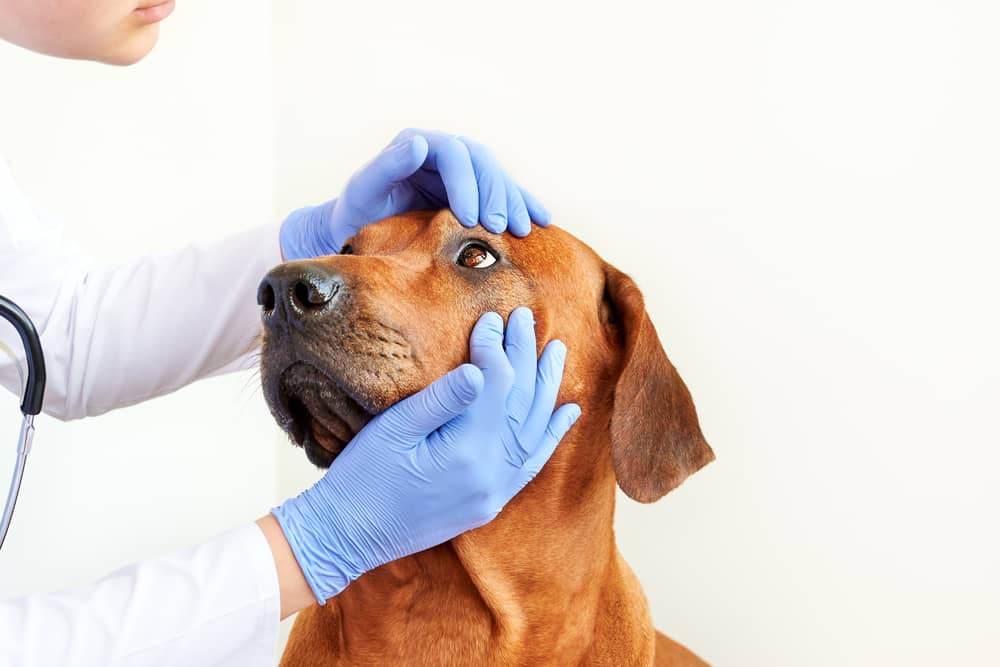
Conclusion
In this article, we have explored various aspects of a common canine concern: the use of Vaseline for dog eye boogers. Let’s recap the key points covered:
- Understanding Dog Eye Boogers: We delved into what eye boogers are and why dogs get them, touching on common causes like environmental allergens, infections, and breed-specific issues.
- Vaseline and Its Properties: The composition and general uses of Vaseline were discussed, along with its properties relevant to eye care, such as moisturizing effects and forming a protective barrier. However, caution was emphasized due to the risks of eye irritation and contamination.
- Pros and Cons of Using Vaseline: We weighed the benefits of Vaseline, like its moisturizing effects and ease of application, against the risks, particularly the potential for eye irritation and contamination.
- Safe Application of Vaseline: A guide on how to safely apply Vaseline to the area around a dog’s eyes was provided, underlining the importance of technique and caution.
- Alternative Solutions and Preventive Measures: Other safe and effective methods for managing eye boogers in dogs were discussed, including regular cleaning, saline solutions, and veterinary eye drops.
Preventive care through diet, grooming, and environmental adjustments was also highlighted.
- When to See a Vet: The signs that indicate a need for professional medical attention were outlined, stressing the importance of veterinary consultation for eye-related symptoms.
- Real-life Cases and Testimonials: Anonymized stories from pet owners who have used Vaseline or other remedies for dog eye boogers were shared, discussing the outcomes and lessons learned.
- Additional Resources: A list of recommended readings, websites, and videos for further information on dog eye care and general health was provided.
In conclusion, while Vaseline may offer some benefits for issues around the eyes, it’s crucial to use it with extreme caution and preferably under the guidance of a veterinarian. The health and safety of your dog should always be the primary concern.
Remember, when it comes to the health of your pet, especially something as sensitive as eye care, consulting with a veterinarian for personalized advice is always the best course of action. They can provide tailored recommendations and treatment plans based on your dog’s specific needs and health status.
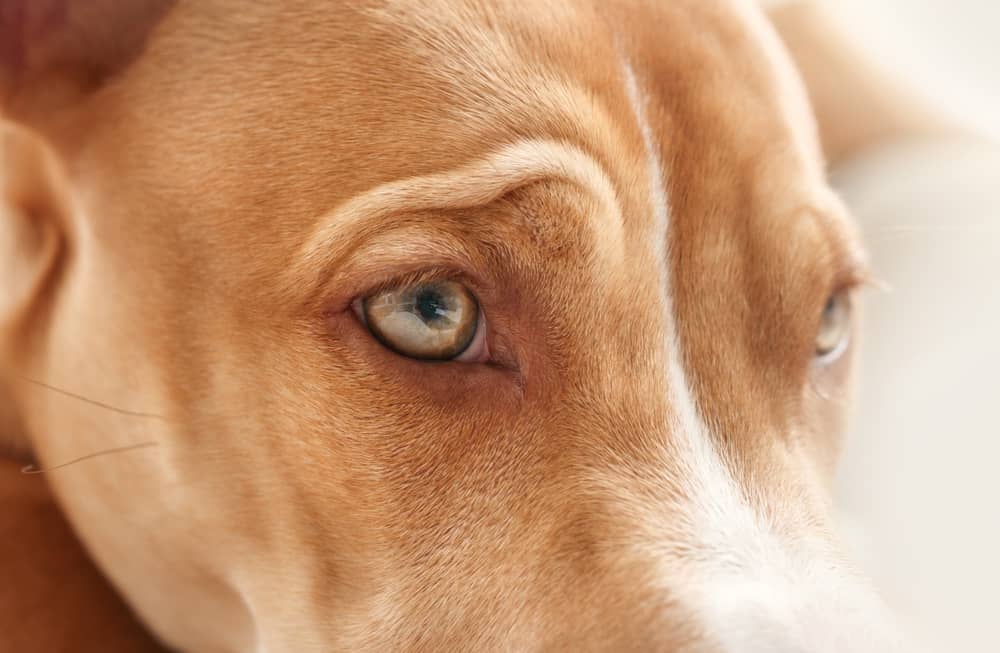
Final Disclaimer
As we conclude this exploration of using Vaseline for dog eye boogers, it is imperative to reemphasize the disclaimer stated at the outset of this article.
The information provided throughout this discussion is intended solely for educational purposes. It is not, under any circumstances, a substitute for professional veterinary advice, diagnosis, or treatment.
The health and well-being of your pet should always be of paramount importance. While home remedies and over-the-counter products like Vaseline can sometimes offer relief in minor cases, they should never replace the expert guidance of a trained veterinary professional.
Eye health, in particular, is a delicate aspect of your dog’s overall well-being and requires careful attention. Misdiagnosis or incorrect treatment can lead to complications or exacerbate existing conditions.
Therefore, if you are considering any form of treatment, especially for something as sensitive as your pet’s eyes, it is crucial to consult with a veterinarian first. They are best equipped to provide advice that takes into account your dog’s specific health needs and medical history.
Remember, each dog is unique, and what works for one may not be suitable for another. Trust in professional veterinary care to ensure the safest and most effective treatment for your beloved pet.
